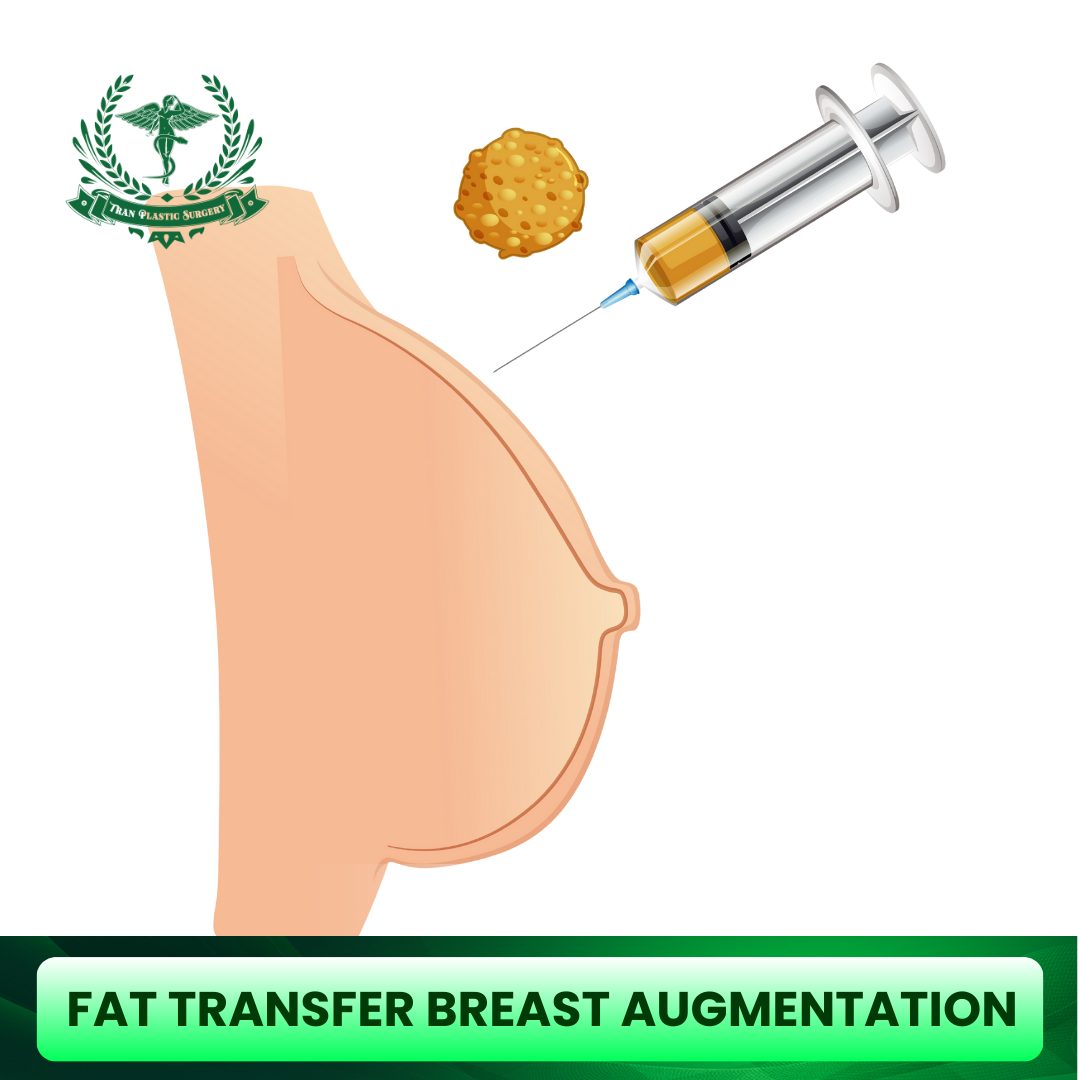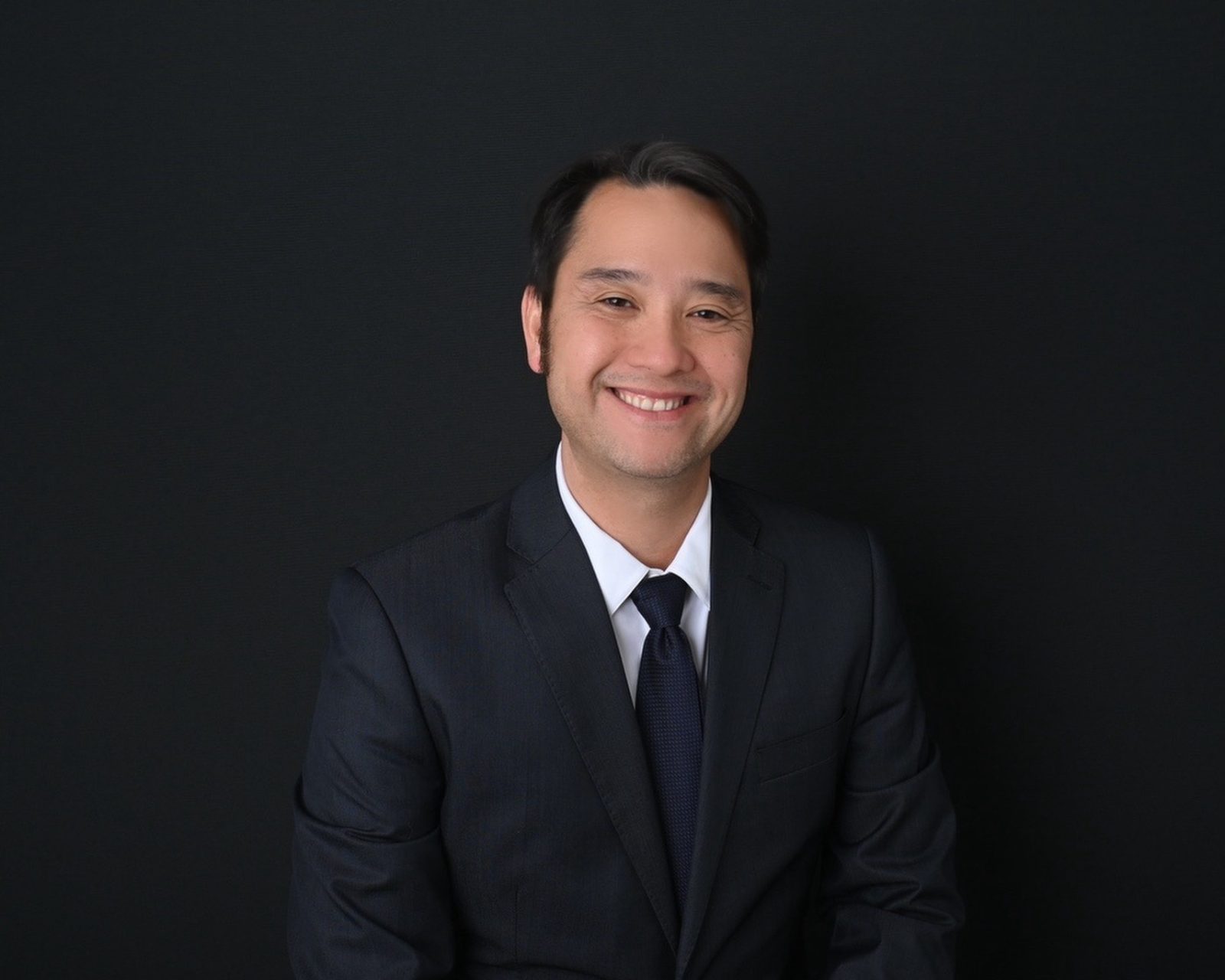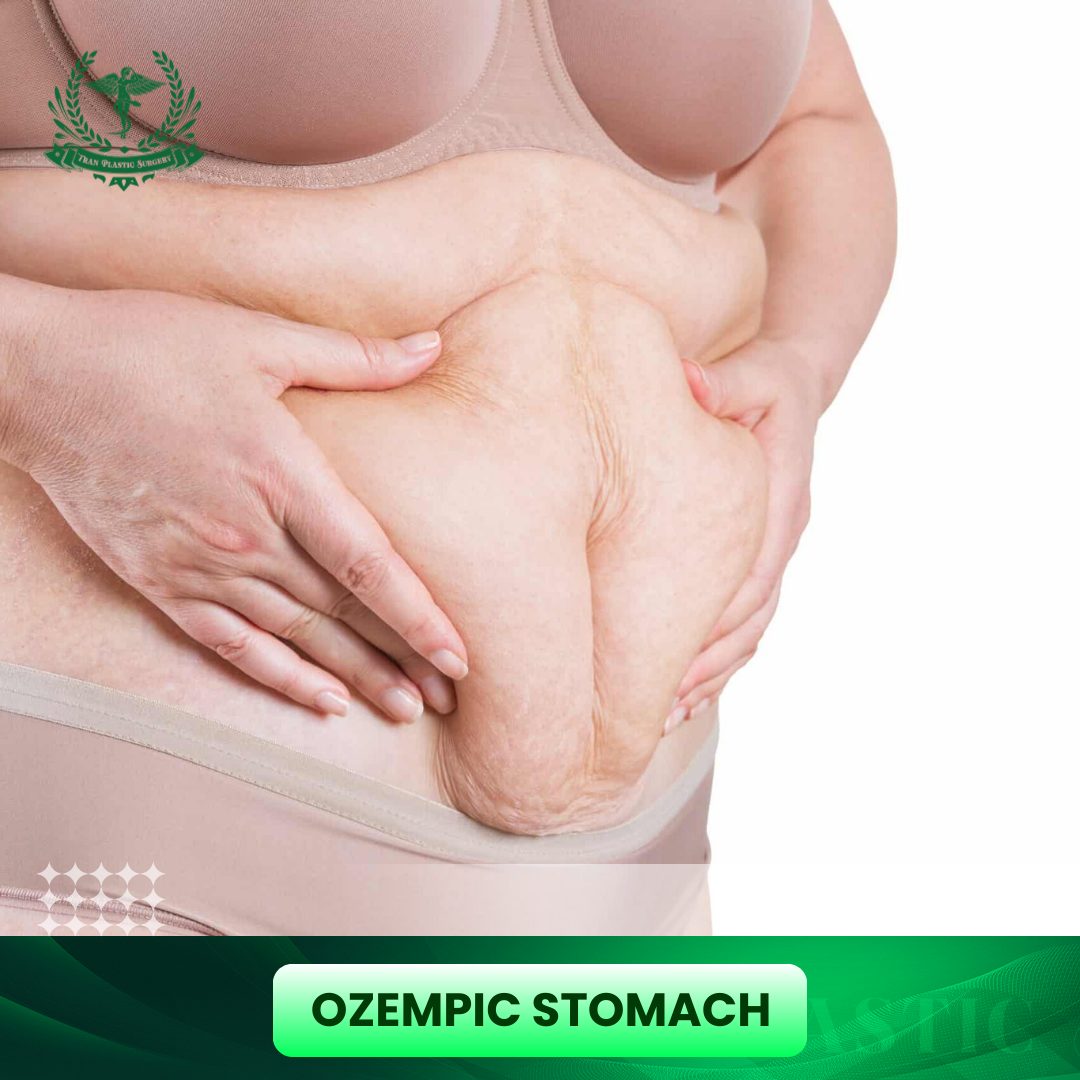Fat transfer breast augmentation, could this be the natural alternative you’ve been searching for? Have you ever wished you could take excess fat from stubborn areas and use it to enhance your breasts instead of relying on implants? This innovative procedure does exactly that, combining body contouring with subtle, natural breast enhancement. For women seeking soft, authentic results with fewer risks than traditional implants, fat transfer breast augmentation is changing the way beauty and confidence are defined.
Table of Contents
ToggleWhat Is Fat Transfer Breast Augmentation?
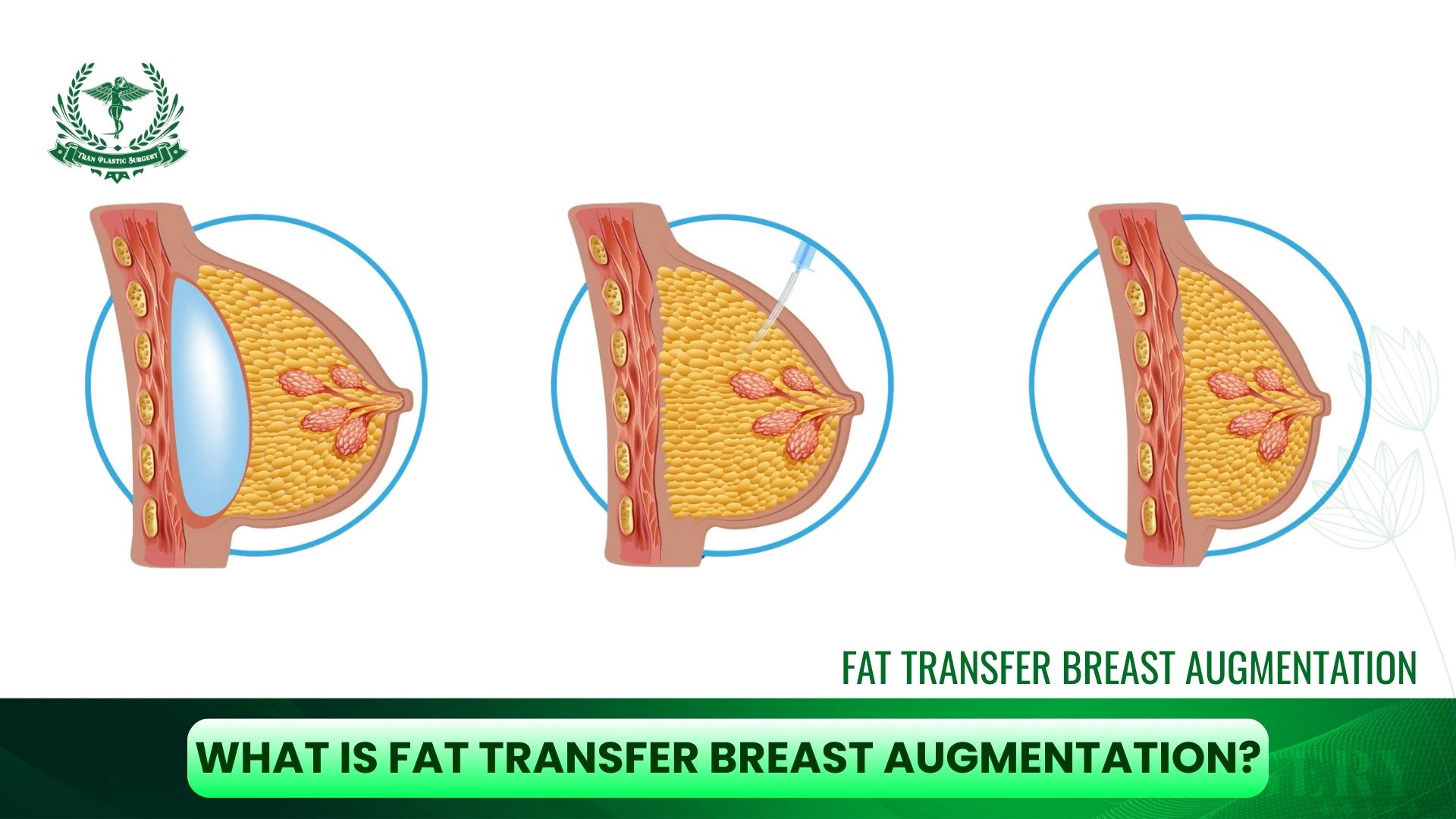
Fat transfer breast augmentation, also known as autologous fat grafting or breast fat transfer, is a surgical technique in plastic surgery that enhances breast size and shape using a patient’s own body fat instead of synthetic implants. This method has become increasingly popular among women seeking a more natural alternative to traditional breast augmentation with implants.
The procedure involves three essential steps:
→ Fat Harvesting – Excess fat is gently removed from donor areas such as the abdomen, thighs, or flanks through liposuction.
→ Fat Processing – The harvested fat is purified to separate healthy, viable fat cells from fluids and other components.
→ Fat Injection – The purified fat is carefully injected into the breasts in multiple layers to create a fuller, natural-looking breast contour.
Unlike saline or silicone implants, fat transfer breast augmentation uses the patient’s own tissue, which reduces the risks of rejection, capsular contracture, or allergic reactions. It is particularly suitable for individuals who desire modest breast enlargement (typically one cup size increase) and a softer, more natural look and feel.
From a medical perspective, the technique combines two aesthetic benefits: liposuction of unwanted fat deposits and breast enhancement without foreign materials. However, it is important to note that results may vary depending on how much fat survives the transfer process, as the body can reabsorb a portion of the injected fat over time.
In summary, fat transfer breast augmentation represents a minimally invasive, dual-benefit approach to breast enhancement that appeals to patients prioritizing safety, natural results, and body contouring in one procedure.
Related posts:
How Is Fat Transfer Breast Augmentation Different from Implants?
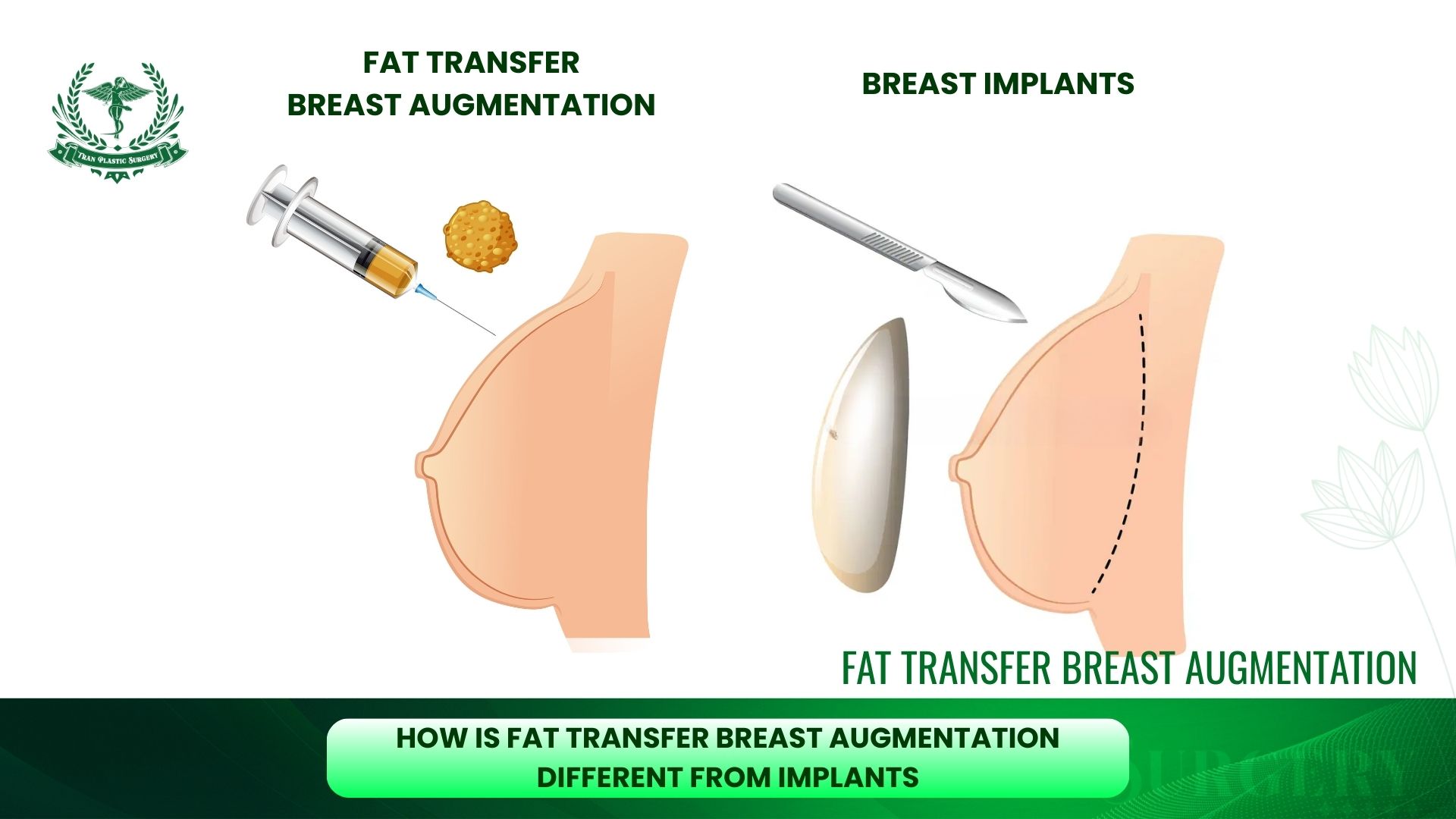
When deciding between fat transfer breast augmentation and breast implants, patients should understand the major differences in technique, outcomes, and long-term considerations.
Key Takeaway
- Fat Transfer Breast Augmentation → best for patients who want natural results, body contouring, and subtle enlargement.
- Breast Implants → best for patients seeking dramatic size increase and predictable outcomes.
Comparison Table: Fat Transfer vs. Breast Implants
Aspect | Fat Transfer Breast Augmentation | Breast Implants |
Material Used | Patient’s own fat (autologous tissue) harvested via liposuction | Silicone gel or saline-filled implants |
Average Size Increase | About 1 cup size (150–250 cc per breast) | Wide range, 200–800+ cc (predictable enlargement) |
Look & Feel | Very natural and soft, similar to normal breast tissue | Fuller, rounder, sometimes firmer, especially in thin patients |
Dual Benefits | Enhances breasts and slims donor areas through liposuction | Breast enlargement only |
Fat/Implant Longevity | 50–70% of fat survives permanently; results change with weight | Implants last 10–15 years; may require replacement |
Risks & Complications | Fat necrosis (up to 10%), calcifications, asymmetry | Capsular contracture (10–15% at 10 years), rupture, rare BIA-ALCL |
Scarring & Recovery | Minimal scarring, shorter downtime (1–2 weeks) | More visible incisions, recovery ~2–4 weeks |
Cost (U.S. Average) | $8,000–$15,000, varies with liposuction areas | $6,000–$10,000, often lower upfront |
Ideal Candidate | Seeks natural breast augmentation, has enough donor fat, wants modest results | Wants significant enlargement, predictable size increase, limited body fat |
Long-Term Maintenance | Permanent fat survival, but weight loss may reduce volume | Implants require monitoring and possible replacement |
Who Is a Good Candidate for Fat Transfer Breast Augmentation?
Not every patient is an ideal match for fat transfer breast augmentation. Success depends on factors such as body composition, health status, and surgical goals. According to the American Society of Plastic Surgeons (ASPS), the best candidates share several common characteristics.
Candidate Checklist
Criteria | Ideal Candidate Profile | Not Recommended If… |
General Health | Non-smoker, no uncontrolled medical conditions, cleared for elective surgery | Smoker, uncontrolled diabetes, clotting disorders, or poor wound healing |
Body Fat Availability | Has sufficient donor fat in abdomen, thighs, hips, or flanks (BMI > 20 is usually preferred) | Very thin patients (BMI < 19) with little fat to harvest |
Breast Goals | Desires modest enlargement (~1 cup size) and natural shape | Wants a dramatic size increase (2+ cup sizes) |
Skin & Tissue Quality | Healthy skin elasticity, no severe sagging | Significant breast ptosis (may require breast lift) |
Expectations | Understands that 50–70% of fat survives long-term; results may vary | Expects exact, permanent size like implants |
Lifestyle | Stable body weight, willing to follow recovery instructions, maintains healthy habits | Large weight fluctuations, poor post-op compliance |
Key Considerations for Candidacy
- Weight Stability: Patients who gain or lose large amounts of weight post-surgery may see changes in breast volume since fat behaves like normal tissue.
- Age Range: Most candidates are between 20–50 years old, though suitability depends more on health and fat availability than age alone.
- Combined Procedures: Patients with mild breast sagging may combine fat transfer with a breast lift for optimal results.
The ideal candidate for fat transfer breast augmentation is a healthy, non-smoking woman with enough donor fat who desires natural-looking enhancement rather than dramatic enlargement.
Transform your silhouette – Book your Breast Augmentation consultation now at Tran Plastic Surgery!
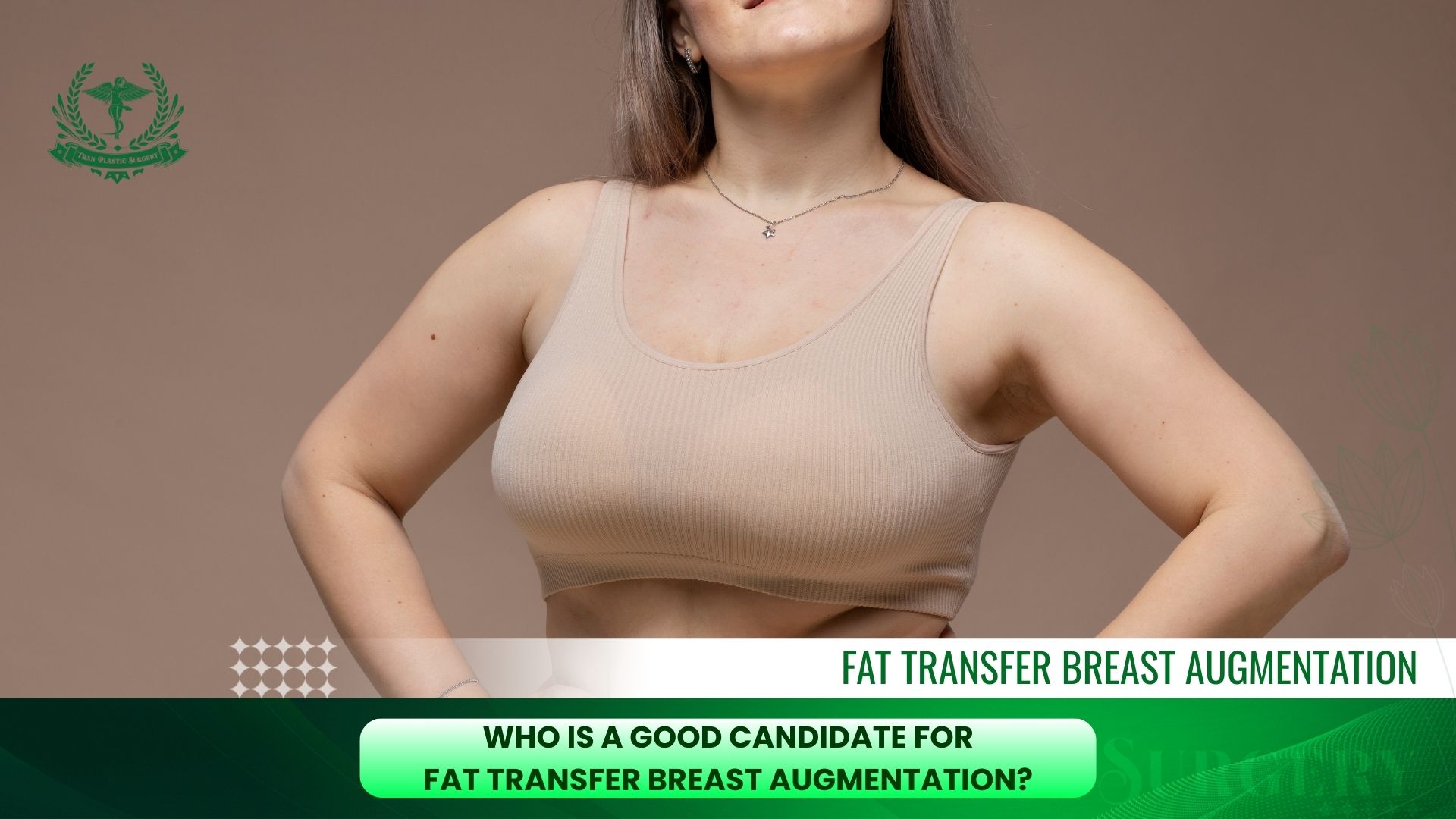
Pros and Cons of Fat Transfer Breast Augmentation
Like any cosmetic procedure, fat transfer breast augmentation comes with both significant advantages and certain limitations. Understanding these pros and cons helps patients set realistic expectations and decide whether the procedure aligns with their goals.
1. Key Benefits of Fat Transfer Breast Augmentation
- Natural Look and Feel
Since the procedure uses the patient’s own fat, the breasts look and feel more natural compared to implants. Studies consistently show high patient satisfaction rates over 85% of women report natural-feeling results after fat grafting procedures. - Dual Benefits: Breast Augmentation and Liposuction
Fat is harvested from common problem areas such as the abdomen, thighs, or hips, meaning patients benefit from body contouring and breast enhancement in one surgery. This “two-in-one” effect is one of the main reasons patients choose this approach. - Reduced Risks of Rejection or Allergic Reaction
Because the tissue is autologous (your own), there is no risk of allergic reaction, implant rupture, or foreign-body complications such as capsular contracture. According to the ASPS, complication rates for fat transfer breast augmentation remain below 5% in most clinical studies. - Minimal Scarring and Faster Recovery
The procedure involves only tiny incisions for liposuction and microinjections, leaving almost invisible scars. Recovery is usually shorter than with implants, with most patients returning to normal activities within 1–2 weeks.
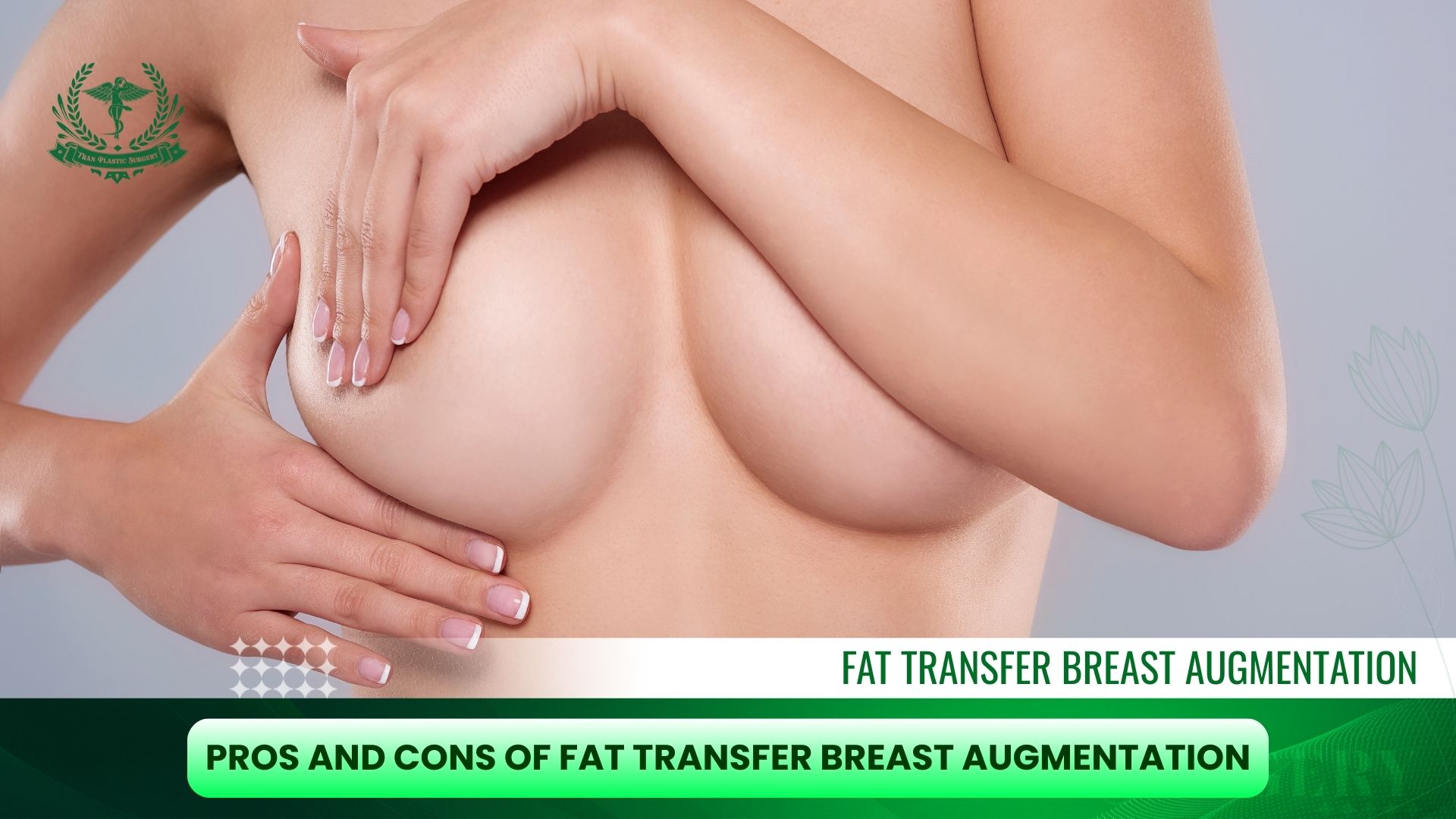
2. Limitations and Risks of Fat Transfer Breast Augmentation
- Limited Volume Enhancement
Fat transfer is best for modest augmentation, usually about one cup size. Patients seeking dramatic enlargement often need implants or a combined procedure. - Unpredictable Fat Reabsorption
Not all transferred fat survives. Typically, 30–50% of injected fat is reabsorbed within the first six months. This means results can vary and may require secondary touch-up sessions. - Not a Substitute for a Breast Lift
While fat can add volume, it cannot correct significant sagging or stretched skin. Patients with moderate to severe ptosis often require a breast lift (mastopexy), either separately or in combination. - Higher Cost Compared to Some Alternatives
Because it combines liposuction, fat processing, and grafting, the cost of fat transfer breast augmentation in the U.S. averages $8,000–$15,000, which is often higher than traditional breast implants ($6,000–$10,000).
Fat transfer breast augmentation is an excellent choice for women who prioritize natural results, subtle enhancement, and body contouring benefits. However, patients seeking significant enlargement or guaranteed size outcomes may find breast implants a better option.
Debunking Common Myths About Fat Transfer Breast Augmentation
Despite its growing popularity, fat transfer breast augmentation is often misunderstood. Misconceptions can lead to unrealistic expectations or unnecessary concerns. Below are the most common myths and the facts that set the record straight.
Myth #1: Fat Transfer Can Achieve a Large Breast Size
Fact: Fat grafting provides subtle, natural enhancement, usually about one cup size. Unlike implants, which can increase breast size by several cup sizes, fat transfer is limited by donor fat availability and fat survival rates. According to clinical studies, the average volume increase is 150–250 cc per breast. Patients seeking dramatic enlargement may require implants or a combined procedure.
Myth #2: The Results of Fat Grafting Are Always Permanent
Fact: While surviving fat cells are permanent, not all transferred fat survives. Typically, 50–70% of the injected fat remains long-term, while the rest is absorbed by the body within the first six months. Weight fluctuations can also impact results, since transferred fat behaves like natural fat tissue.
Myth #3: Fat Transfer Is an Implant-Free and Risk-Free Procedure
Fact: Fat transfer breast augmentation avoids foreign materials, but it is not without risks. Potential complications include fat necrosis (up to 10%), small oil cysts, calcifications, or asymmetry. These are generally less severe than implant-related complications, but patients should still choose a board-certified plastic surgeon to minimize risks.
Myth #4: You Don’t Need Maintenance After a Fat Transfer
Fact: Even though no device replacement is required (unlike implants), maintaining results depends on lifestyle. Significant weight loss can reduce breast volume, while weight gain may enlarge results unevenly. Patients may occasionally need a touch-up procedure if they want to restore lost volume or refine shape.
Fat transfer breast augmentation is a safe, natural, and effective option but it’s not a miracle procedure. Understanding the realities of volume limits, fat survival, and potential risks ensures patients make informed decisions and maintain realistic expectations.
The Fat Transfer Breast Augmentation Procedure
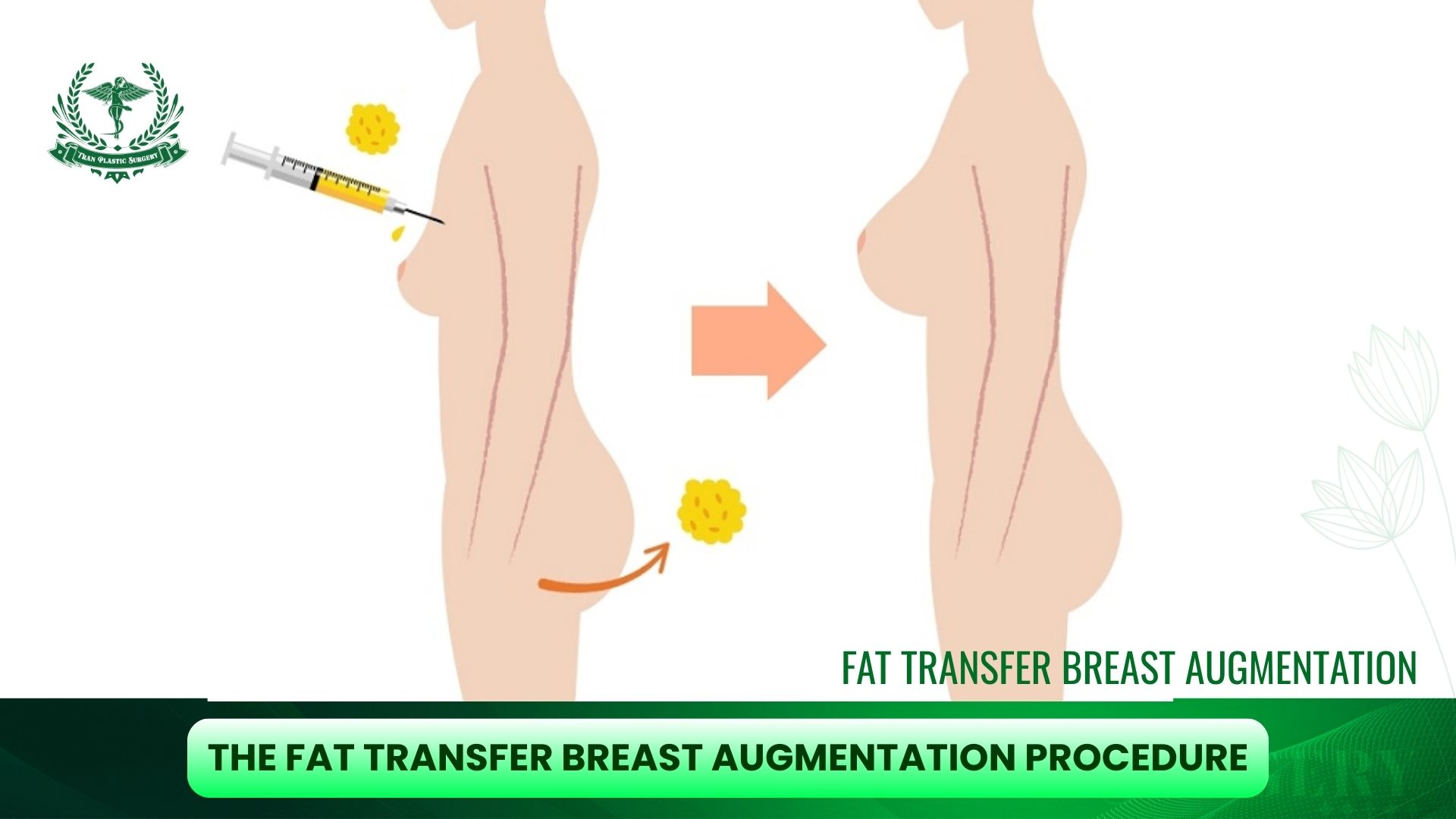
Undergoing fat transfer breast augmentation involves a series of carefully planned steps designed to ensure both safety and natural-looking results. The procedure is typically performed under general anesthesia and takes between 2–4 hours, depending on the amount of fat harvested and injected.
Step #1: Personalized Consultation
Every procedure begins with an in-depth consultation with a board-certified plastic surgeon. During this stage:
- The surgeon evaluates your medical history, breast anatomy, and donor fat availability.
- Your goals are discussed, including desired size and shape.
- Imaging or 3D simulation may be used to help set realistic expectations.
This step is critical to determine if you are a good candidate for fat transfer breast augmentation or if implants or a combination of both would better meet your goals.
Step #2: Fat Harvesting via Liposuction
The procedure starts with liposuction from areas such as the abdomen, thighs, hips, or flanks. Small cannulas are used to gently remove fat, minimizing trauma to the cells.
- Typical fat removal ranges from 200–500 cc per donor site.
- Patients benefit from body contouring as unwanted fat is sculpted away.
This dual benefitslimming donor areas while enhancing the breasts is one of the biggest appeals of breast fat transfer.
Step #3: Fat Purification for Transfer
Once harvested, the fat undergoes purification to separate healthy, viable fat cells from oils, blood, and fluids. This is done using techniques such as centrifugation or filtration.
- Only the most viable fat cells are selected for injection.
- Purification increases the long-term survival rate of transferred fat (50–70%).
Step #4: Precise Fat Injection for Breast Contouring
Finally, the surgeon carefully injects the purified fat into the breasts using microdroplet techniques.
- Fat is distributed in multiple layers to maximize contact with blood supply.
- This approach helps ensure even distribution, natural shape, and improved fat survival.
- On average, 150–250 cc per breast is injected for modest but noticeable enhancement.
The fat transfer breast augmentation procedure is both art and science: it requires surgical precision in fat harvesting and injection, along with an artistic eye for breast symmetry and natural contouring. When performed by an experienced surgeon, it delivers natural-looking, long-lasting results with minimal scarring.
Recovery After Fat Transfer Breast Augmentation
Healing after fat transfer breast augmentation is generally smoother and faster than implant surgery, but it still requires careful attention. Recovery involves not only healing from liposuction but also allowing transferred fat to stabilize and develop a healthy blood supply.
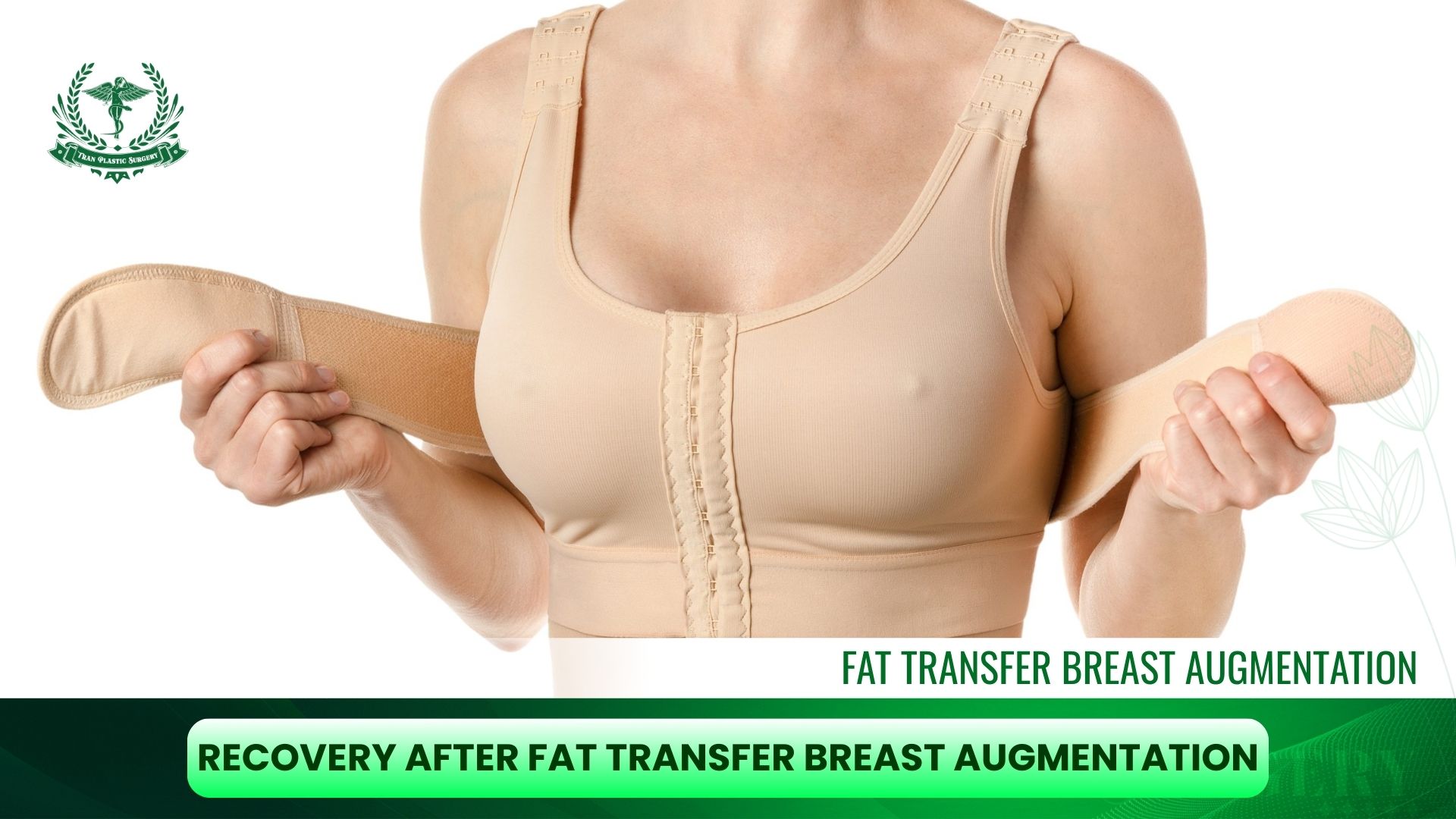
1. The Typical Recovery Timeline
- Week 1
- Swelling, bruising, and mild discomfort are common in both the donor sites and breasts.
- Most patients can walk and perform light activities within 1–2 days.
- Compression garments are worn on liposuction areas to reduce swelling.
- Weeks 2–3
- Bruising begins to fade, and discomfort significantly decreases.
- Patients can usually return to office work or school.
- Avoid strenuous exercise or direct pressure on the breasts.
- Month 1
- Swelling continues to subside.
- The breasts begin to take on a more natural shape as fat integrates into the tissue.
- Light exercise, such as walking or gentle yoga, is usually permitted.
- Months 3–6
- Final results become more visible.
- By this stage, 50–70% of transferred fat has survived; the rest may be reabsorbed by the body.
- Patients can resume full physical activity, including high-intensity exercise.
2. Essential Post-Operative Care Instructions
- Avoid Pressure on the Breasts: Do not sleep on your chest or wear tight bras for at least 3–4 weeks, as this can compromise fat survival.
- Maintain Stable Weight: Significant weight loss after surgery may reduce breast volume, while weight gain can increase size unevenly.
- Compression Garments: Required for donor areas (abdomen, thighs, hips) for 4–6 weeks to minimize swelling and improve contour.
- No Smoking or Alcohol: Both reduce circulation and may lower fat survival rates.
- Follow-Up Appointments: Essential for monitoring healing and evaluating whether additional fat transfer sessions are needed.
3. How to Maximize the Longevity of Your Results
- Fat Survival Rate: On average, 50–70% of transferred fat cells establish a long-term blood supply and remain permanent.
- Lifestyle Impact: Healthy diet, stable weight, and regular exercise can help preserve results for many years.
- Touch-Up Procedures: Some patients may choose a secondary fat grafting session to achieve fuller results or correct minor asymmetry.
Recovery from fat transfer breast augmentation is typically shorter and less painful than implant surgery, but long-term success depends on careful aftercare and lifestyle choices. Patients who follow post-operative instructions and maintain stable weight enjoy natural, lasting results. If you have any further questions, please call Dr. Tuan Tran via Hotline (714) 839-8000 for advice.
Fat Transfer Breast Augmentation Cost and Financing
The cost of fat transfer breast augmentation varies widely, but in the United States, patients can expect to pay between $8,000 and $15,000 on average. This range is typically higher than standard breast implant surgery, which averages $6,000 to $10,000, largely because fat transfer involves both liposuction and fat grafting.
1. What Factors Influence the Cost?
Several factors determine the final price of fat transfer breast augmentation:
- Surgeon’s Expertise and Credentials: Board-certified plastic surgeons with extensive experience in fat grafting may charge higher fees, but their expertise often improves fat survival and aesthetic outcomes.
- Geographic Location: Costs in major metropolitan areas like Los Angeles, New York, or Miami are often 20–30% higher than in smaller cities due to higher demand and overhead expenses.
- Operating Facility and Anesthesia: Accredited surgical centers and the use of board-certified anesthesiologists contribute to safety but also add to the overall expense.
- Amount of Fat Harvested and Transferred: More extensive liposuction (abdomen, thighs, flanks) and higher fat transfer volumes increase surgical time and cost.
- Additional Procedures: If combined with a breast lift (mastopexy) or additional contouring procedures, the cost will be higher.
2. Insurance Coverage
Because fat transfer breast augmentation is considered an elective cosmetic surgery, it is not covered by health insurance. Exceptions are rare and typically apply only to reconstructive breast surgery following mastectomy or trauma. Patients should not expect insurance to offset costs for cosmetic augmentation.
3. Financing Options
Most plastic surgery practices in the U.S. offer financing plans to make the procedure more accessible. Common options include:
- Medical Credit Companies such as CareCredit®, Prosper® Healthcare Lending, or Alphaeon Credit®.
- Monthly Installment Plans directly through the clinic, often with 6–24 month terms.
- Personal Loans or Credit Cards for patients who prefer independent financing.
These solutions allow patients to spread the cost of surgery over time rather than paying in full upfront.
While fat transfer breast augmentation is often more expensive than implants, many patients view it as a worthwhile investment due to its dual benefits of natural breast enhancement plus body contouring through liposuction. Understanding the financial aspects ahead of time helps patients plan realistically and avoid surprises.
Reference article: Silicone vs Saline Implants: Which Is Right for You?
Why Choose Tran Plastic Surgery for Fat Transfer Breast Augmentation?
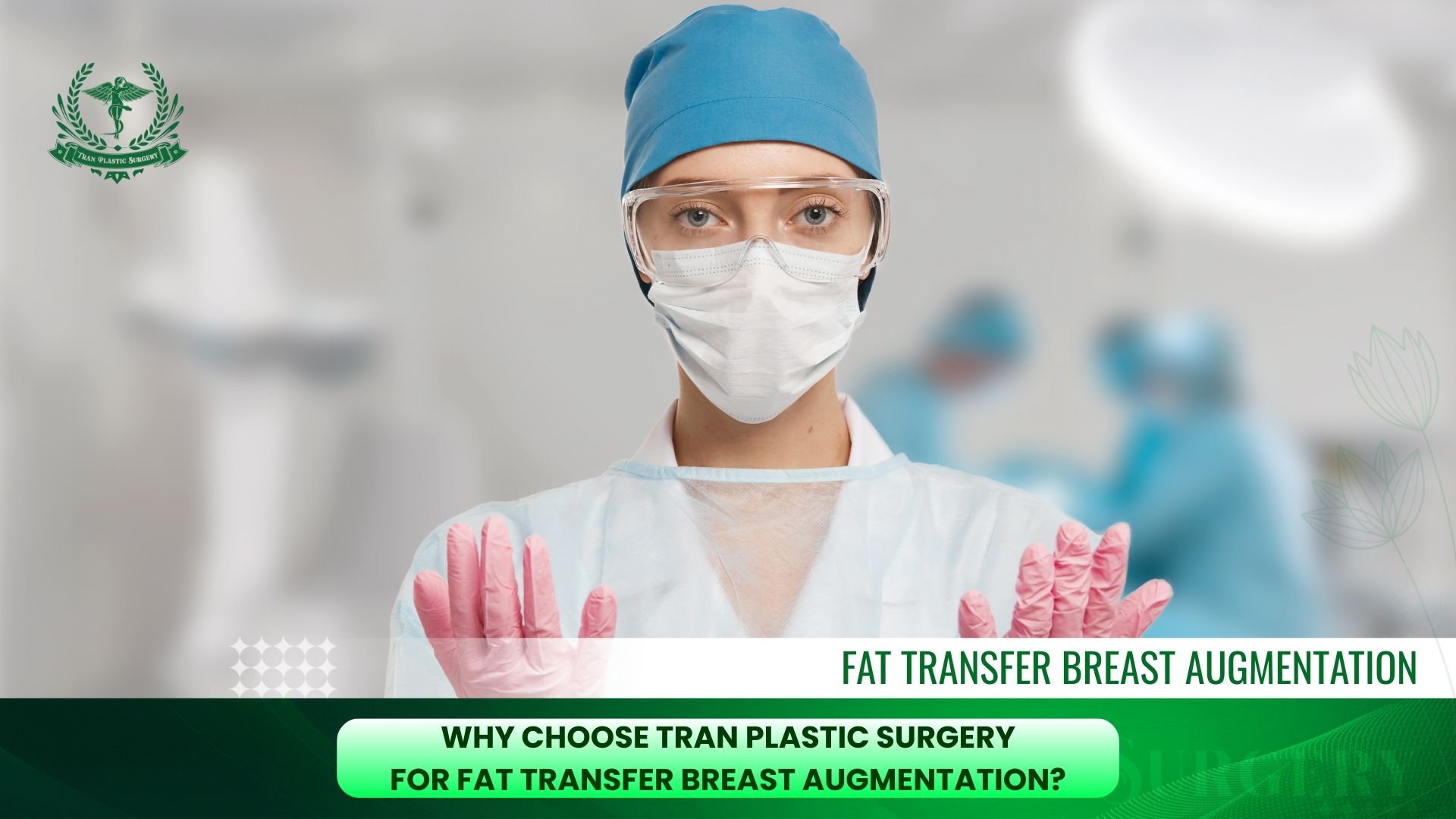
At Tran Plastic Surgery, we specialize in fat transfer breast augmentation with a commitment to natural, safe, and long-lasting results. Our board-certified plastic surgeon combines advanced fat grafting techniques with an artistic eye for body contouring, ensuring that every patient achieves soft, natural-looking breasts while benefiting from liposuction-based sculpting.
Patients choose us not only for our surgical expertise but also for our dedication to personalized care. From the first consultation to post-operative follow-up, we prioritize safety, comfort, and satisfaction. Our before-and-after gallery showcases consistent results, and our patients trust us because we deliver natural breast enhancement without compromising safety or quality.
If you are considering a fat transfer breast augmentation, there is no better time to explore your options. At Tran Plastic Surgery, we help women achieve natural breast enhancement with the added benefit of body contouring. Schedule your private consultation today and take the first step toward the confidence and figure you’ve always wanted.
Frequently Asked Questions (FAQs) About Breast Fat Transfer
1. Can I lose my breast fat transfer if I lose weight?
Yes. Since transferred fat behaves like normal body fat, significant weight loss can reduce breast volume. Patients who maintain a stable weight typically enjoy longer-lasting results.
2. What is the best age for fat transfer breast augmentation?
There is no strict “best age,” but most candidates are between 20–50 years old. Suitability depends more on health, skin quality, and available donor fat than age alone.
3. How do breasts feel after fat transfer?
Breasts feel soft and natural because they are enhanced with your own fat cells rather than synthetic implants. Studies show over 85% of patients report that their breasts feel like natural tissue after fat grafting.
4. Breast implants vs. breast fat transfer: which is better?
It depends on your goals. Fat transfer breast augmentation is ideal for subtle, natural enhancement and body contouring, while implants are better for dramatic size increases and highly predictable outcomes. Some patients choose a hybrid approach (fat transfer + implants) for the best of both.
5. Can breasts grow after fat transfer?
No. The transferred fat does not multiply or cause natural breast growth. However, if you gain weight, the transplanted fat cells may enlarge, increasing breast size.
6. Why do I weigh more after fat transfer?
Some patients notice a temporary increase in weight due to fluid retention, swelling, and fat grafting volume. This usually stabilizes within a few weeks as swelling subsides and the body adjusts.
7. Is fat transfer breast augmentation safe?
Yes, fat transfer breast augmentation is considered safe when performed by a board-certified plastic surgeon. Since the procedure uses your own fat, the risk of allergic reaction or implant-related complications is significantly reduced. However, like any surgery, it carries potential risks such as fat reabsorption, infection, or calcification.
8. How much bigger can you get with fat transfer to breasts?
Most patients achieve a modest increase of about one cup size with fat transfer breast augmentation. Unlike implants, which can produce dramatic changes, fat grafting provides subtle, natural-looking enhancement.
9. How long does fat transfer breast augmentation last?
Results can be long-lasting if a sufficient amount of transferred fat survives. Typically, around 50–70% of the injected fat establishes a permanent blood supply and remains in the breasts. Factors like weight stability and surgeon technique play a key role in longevity.
10. Can thin patients get breast fat transfer?
Yes, but results may be limited. Thin patients with little excess fat may not have enough donor fat for significant augmentation. In such cases, fat transfer may be combined with implants or limited to subtle reshaping.
Why Choose Tran Plastic Surgery for Fat Transfer Breast Augmentation?
At Tran Plastic Surgery, we specialize in fat transfer breast augmentation with a commitment to natural, safe, and long-lasting results. Our board-certified plastic surgeon combines advanced fat grafting techniques with an artistic eye for body contouring, ensuring that every patient achieves soft, natural-looking breasts while benefiting from liposuction-based sculpting.
Patients choose us not only for our surgical expertise but also for our dedication to personalized care. From the first consultation to post-operative follow-up, we prioritize safety, comfort, and satisfaction. Our before-and-after gallery showcases consistent results, and our patients trust us because we deliver natural breast enhancement without compromising safety or quality.
Schedule Your Fat Transfer Breast Augmentation Consultation Today
If you are considering a fat transfer breast augmentation, there is no better time to explore your options. At Tran Plastic Surgery, we help women achieve natural breast enhancement with the added benefit of body contouring. Schedule your private consultation today and take the first step toward the confidence and figure you’ve always wanted.

